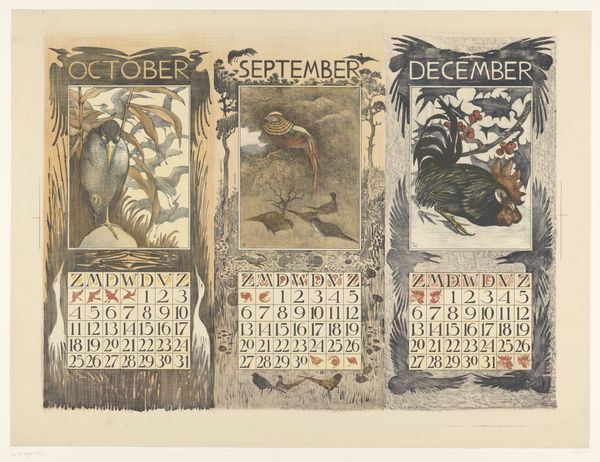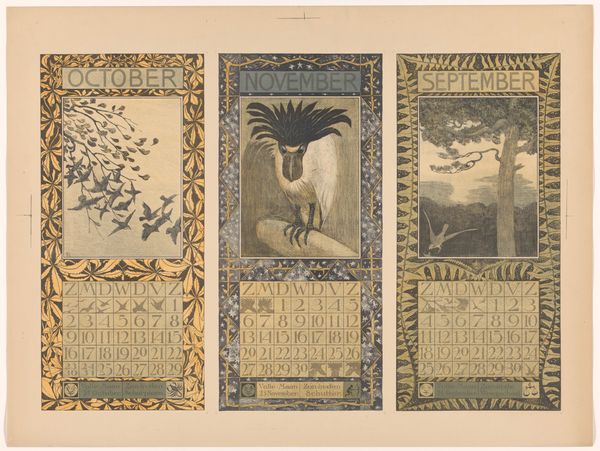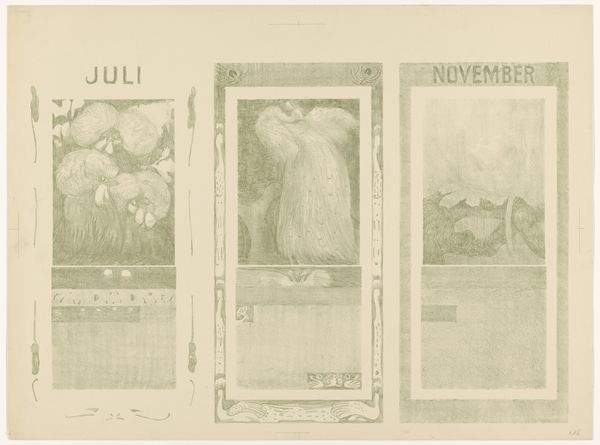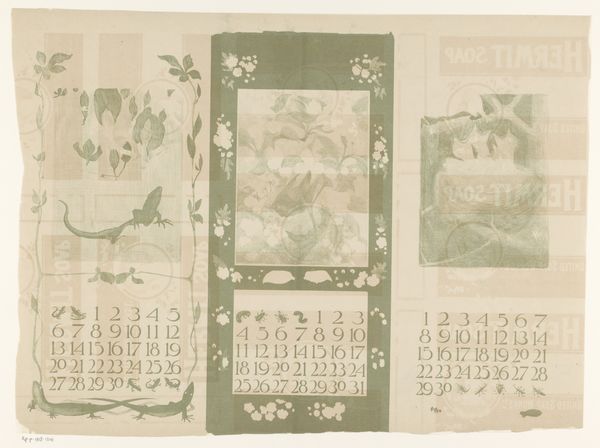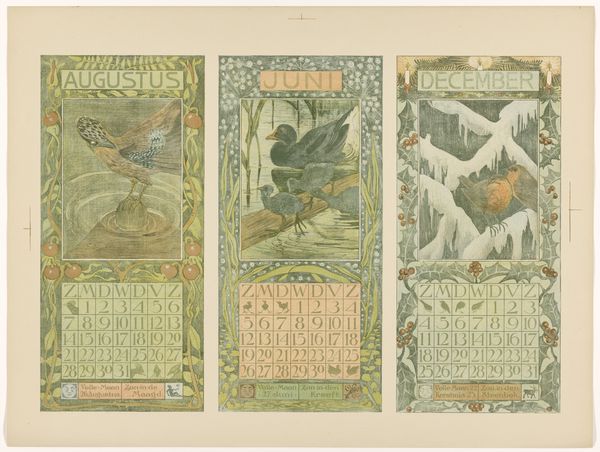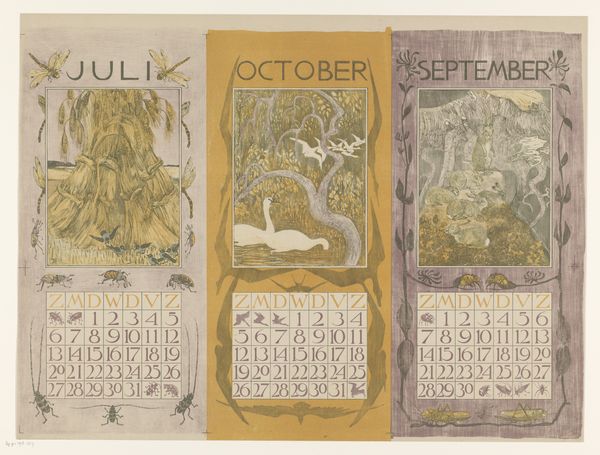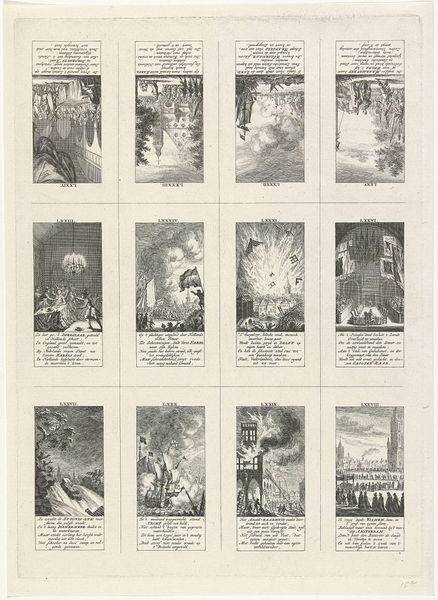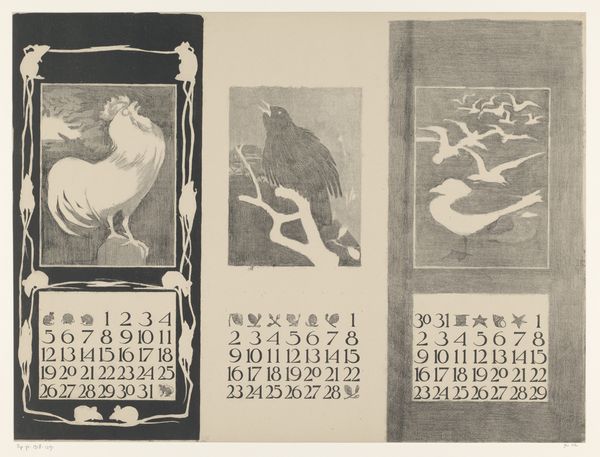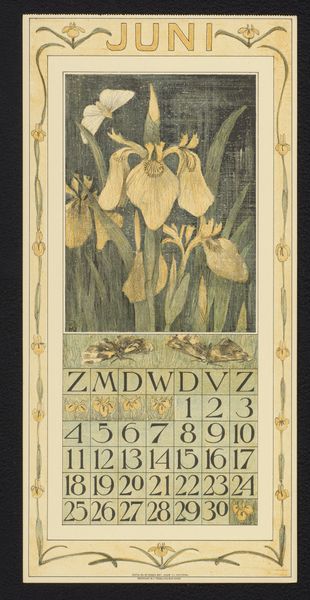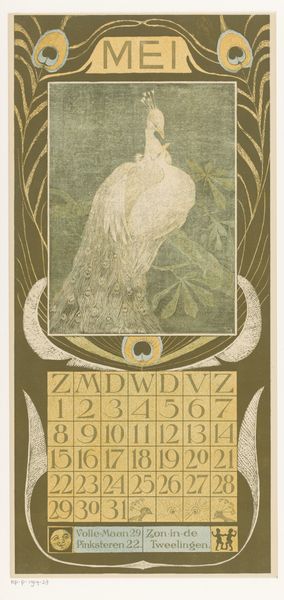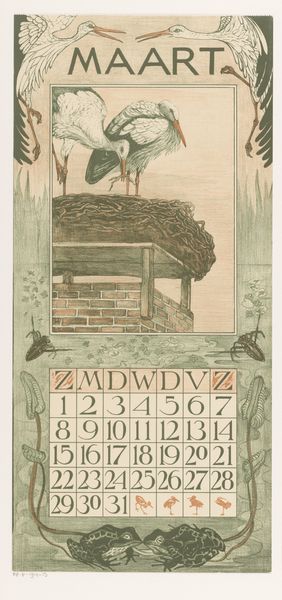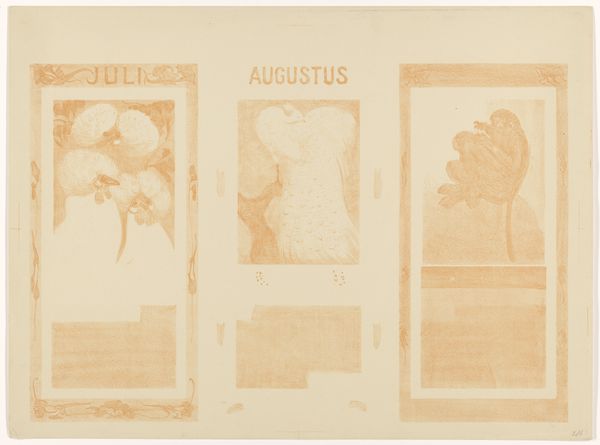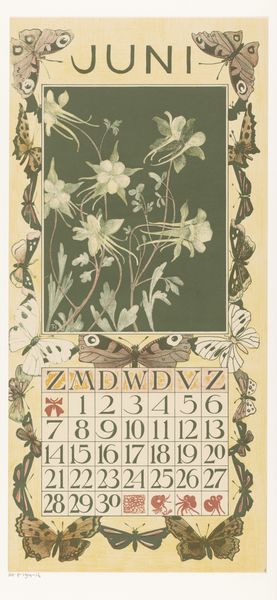
Dimensions: height 521 mm, width 702 mm
Copyright: Rijks Museum: Open Domain
Curator: Let’s take a look at "Kalenders voor juli, augustus en november 1910," a woodcut by Theo van Hoytema from 1910, currently held in the Rijksmuseum. What are your first impressions? Editor: Stark and subdued, with a strangely comforting mood. I appreciate the monochromatic scheme and the vertical composition split into those three distinct panels with subtle differences. There’s something unsettling, but captivating, about the animals...are they chickens, a peacock and monkeys? It looks more like graphic art than decorative fine art somehow. Curator: Indeed. Van Hoytema was very invested in the process and labor involved. He specifically chose the woodcut medium, embracing both its accessibility and its link to printmaking traditions to create these graphic calendar sheets, rather than paintings destined for only a few eyes. Editor: So, accessibility through reproduction? It immediately situates this as a democratizing force in the art world of the time. This also looks beyond purely aesthetic experience—it challenges notions of 'high' art by incorporating functional design, something many female artisans, especially those involved with the Arts and Crafts movement at this period were very focused on. It highlights issues around class, gender, and access within the art market itself. Curator: Precisely. And by using these recognizable images – farmyard animals and exotic creatures from colonies -- rendered in a rather unique, almost crude style – Van Hoytema perhaps hints at consumer culture and mass production while questioning our relationship with the natural world and what is art or design, a debate that has become ever present with automation, artificial intelligence and NFTs. Editor: The symbolism of the animals is interesting too. The roosters could signify July's heat, the peacock evokes August's beauty and abundance, while the monkeys perhaps connect to the November harvest and coming dormancy. I also wonder how people displayed this when new—framed or perhaps pinned to the wall in a worker’s cottage as something valuable, even precious because it's artistic. Curator: Good points. Van Hoytema really pushed boundaries. What are your lasting thoughts? Editor: I now see a statement piece, embedded within complex societal, ecological and political undertones regarding art, accessibility, production and our relationships with our fellow creatures, and even our selves. It bridges the gap between everyday object and something with deeper value. Curator: I agree, a beautiful and accessible piece of design art that makes us reflect on materials, mass production and a specific moment of time.
Comments
No comments
Be the first to comment and join the conversation on the ultimate creative platform.
